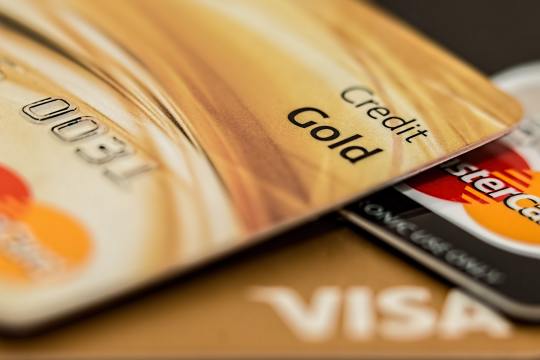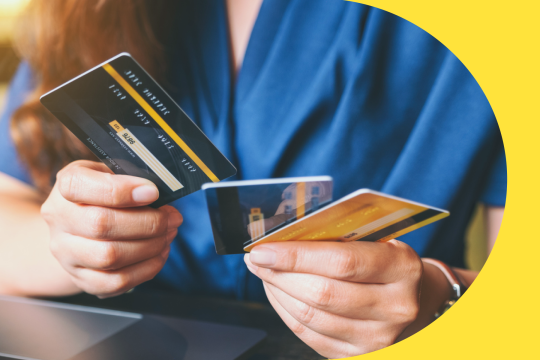Credit cards aren't just plastic in your wallet. They’re an important part of your financial journey. And when you’re ready for more rewards and benefits, you might start to wonder: Can you upgrade a credit card?
You can, and a credit card upgrade is a great way to make more progress toward your financial goals. Better cards usually mean more rewards points, a higher credit limit, and even a boost for your credit score. But it isn’t something to take lightly — because if you upgrade before you’re ready, you could end up taking on more responsibility than you can handle.
From understanding the perks to navigating potential cons, we'll look at the art and science of credit card upgrades. Your next financial move will be as informed as it is effective.
What is a credit card upgrade?
A credit card upgrade refers to transitioning from your current card to a more premium or better version of the same one. For instance, you might apply for a card upgrade card from Capital One, transitioning from a VentureOne Rewards card to a Venture X Rewards card, which gives you more travel miles per dollar spent.
The primary perk of a credit card upgrade is that it lets you enjoy better benefits without the need for a new credit application, meaning there are no hard inquiries on your credit report. Those inquiries could slightly lower your credit score for a short period, so avoiding them helps maintain your current score. This is particularly helpful if you're planning significant financial moves in the near future, like applying for a mortgage or a car loan.
Credit card upgrades also save you time because you don’t have to sign up with a new issuer or complete long applications. Depending on the card, you might also access higher credit limits, more rewards or points, or a better annual percentage rate (APR). More perks could mean you have to pay a higher annual fee, but upgrading is overall a great move if you’re ready to take on that responsibility.
4 benefits of upgrading your credit card
Opting for a credit card upgrade is like unlocking a new level in your financial game. Here's a closer look at why you might want to upgrade your credit card:
1. Enhanced rewards and cash-back offers. Upgrading to a rewards credit card can give you higher cash-back percentages, more airline miles, or exclusive shopping deals. If you travel a lot or shop often at stores that give you points, you can earn a ton of rewards or cash back.
2. Access to premium features and services. Upgraded cards may offer perks like complimentary travel insurance, access to airport lounges, or even concierge services when you’re traveling. These features can significantly enhance your experience if you’re always on the go.
3. Upgraded line of credit.: With an upgrade, you may be eligible for a higher credit limit, providing more financial flexibility. This can also improve your credit utilization ratio — the percentage of available credit you’re using — which is a critical factor in credit score calculations.
4. Retention of credit history. Sticking with the same card issuer means you retain your credit history with that card. The length of your credit history helps your credit score, so it’s better to upgrade than to look for a new card somewhere else.
3 downsides of upgrading your credit card
Embracing a credit card upgrade can be a smart financial move, but it's not without its downsides. Learning about the cons and if you’re willing to take them on can help you make an informed decision.
Here are factors to consider when upgrading your credit card:
1. Possible annual fees. Upgrading to a premium card often brings along higher annual fees. It's important to carefully balance these costs against the benefits to assess if the upgrade makes financial sense. You might earn $100 worth of points every year, but if the annual fee is $100, there’s likely no point.
2. Loss of certain existing benefits. Changing your card might mean you forfeit some exclusive benefits. Make sure you're not giving up any perks that you really love or use all the time.
3. Change in rewards structure. The new card's rewards structure might differ, and you might not realize it until after you’ve upgraded. For instance, while you might earn more points for dining, you might earn fewer points for travel. Understand if there are any changes in your rewards before you upgrade so you don’t accidentally lose out.
4. No signup bonus. Some issuers give you a bonus or a great APR when you switch your credit card, but if you’re upgrading instead of opening an account, you might not be eligible.
Remember that it’s possible to downgrade your card, too. You might upgrade and decide the new perks aren’t worth the fee or realize that the high credit limit encourages you to spend outside your means. Going back to your original card, or one that has even fewer rewards and benefits, is totally reasonable, so don’t be afraid of asking your issuer if you know that’s the right choice.
How to decide on an upgrade: 4 tips
Every card is different, and looking at both your priorities and your options can help you make the best choice when upgrading. Here are some factors to consider so you reap the maximum benefits:
1. Assess your spending habits. Reflect on what spending categories you use the most. Do you buy a lot of groceries? Love to dine out? Travel often? A reward credit card offering higher cash back on restaurants might be ideal if you’re a foodie, but it might not be worth it if you prefer to cook at home. Frequent travelers might prioritize cards with travel rewards or no foreign transaction fees — perks that you don’t need if you’re a homebody.
2. Compare annual fees and other charges. While some premium cards offer many benefits, they might come with substantial annual fees. Make sure the perks you're gaining outweigh the costs.
3. Evaluate the rewards structure. Dive deep into the rewards structure of the potential upgrade. Understand the points' value, how to redeem them, and possible caps or expiration dates. You don’t want to collect 100,000 points for a vacation just to find out they’ll expire before you can use them.
4. Reputation and customer service. Beyond the card's features, consider the issuer's reputation. Efficient customer service, a user-friendly mobile app, and seamless dispute resolution can greatly enhance your credit card experience. If you already don’t like your issuer, upgrading your card probably won’t help.
How to upgrade a credit card
Upgrading your current card can significantly impact your financial tools and credit score, so don’t go into it lightly. But if you’ve weighed your options and you’re ready for a change, here’s an easy guide to navigate this process:
1. Contact your card issuer. Contact your issuer or bank’s customer service via phone or online chat. You can ask about upgrade options or respond to a credit card offer they might have already told you about. Discuss the available cards, terms, and conditions, and take notes so you don’t forget the details.
2. Review the offer. Don’t accept the offer just yet. Take some time to read the terms, benefits, and associated fees. This step makes sure you're making an informed decision instead of just jumping on what looks like a good deal.
3. Complete the upgrade process. If you decide to proceed, the issuer will guide you through the upgrade process. This might involve accepting the new terms and conditions and confirming your choice. Sometimes you can do this online, and others you’ll have to talk to someone on the phone or go into a branch.
4. Activate and set up the new card. Once the upgrade goes through, you'll receive your new card in the mail. Activate it, set up any extra features, and enjoy the benefits of being a cardholder.
Upgrade your finances with EarnIn
Credit cards can help you boost your credit score and earn points as you spend when used right. But if you’d rather simply use your pay, when you need it, instead of a credit card, EarnIn has you covered.
Earnin’s Cash Out tool gives you access to your earnings as you work, providing flexibility for unexpected expenses and day-to-day spending. You can get up to $100 a day and up to $750 every pay period with no credit checks, no interest, and no mandatory fees. And Earnin's free Credit Monitoring tool helps you stay on top of your credit score to put you on track for success.
Download EarnIn and make every day payday — without the interest or hidden fees.
Please note, the material collected in this post is for informational purposes only and is not intended to be relied upon as or construed as advice regarding any specific circumstances. Nor is it an endorsement of any organization or services.
You may enjoy












EarnIn is a financial technology company not a bank. Subject to your available earnings, Daily Max and Pay Period Max. EarnIn does not charge interest on Cash Outs. EarnIn does not charge hidden fees for use of its services. Restrictions and/or third party fees may apply. EarnIn services may not be available in all states. For more info visit earnin.com/TOS.






